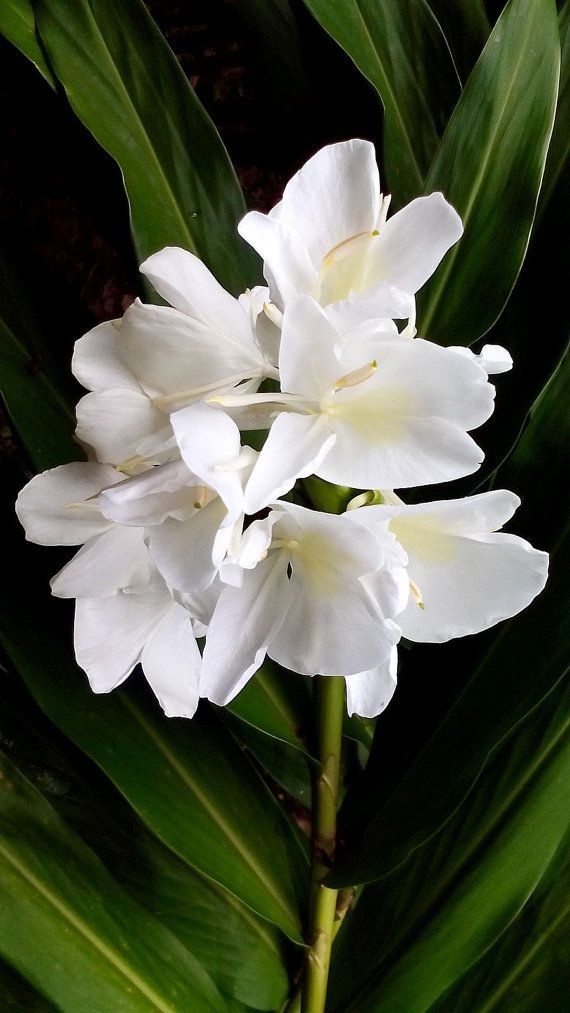
Butterfly Ginger
Hedychium coronarium
Basic Information
🌿 Family: Zingiberaceae🗺️ Zone: 8-11
Other Names:
- White Garland-Lily
- White Gingerlily
- Butterfly Lily
🌡️ Ideal Temperature : 60°F – 85°F
🔥 Heat Tolerance: Up to 95°F
❄️ Cold Tolerance: Down to 15°F
🌱 Type: Perennial
Layers
- Herbaceous
Functions
- Edible
- Medicinal
- Pollinator
- Wildlife Attractor
- Ground Cover
- Erosion Control
Pests
No pests associated with this plant.
Companions
- Fern
- Hostas
- Elephant Ear
Plants to Avoid
- None known
Description
Butterfly Ginger (*Hedychium coronarium*) is an upright perennial native to the forest understory of Asia. It typically reaches heights of 1.2 to 1.5 meters (4 to 5 feet) and spreads about 1.2 to 1.8 meters (4 to 6 feet). The plant features long, lanceolate green leaves arranged alternately along its stems. During late summer to fall, it produces fragrant white flowers reminiscent of butterflies, which are particularly attractive to pollinators. The plant thrives in hot and humid conditions, preferring consistently moist soils.
🌞💧 Sun and Water Requirements:
Butterfly Ginger flourishes in full sun to partial shade. In hotter climates, providing afternoon shade can help prevent leaf scorch. The plant prefers consistently moist, well-draining soils and benefits from regular watering, especially during dry periods.
✂️🫘 Methods to Propagate:
Propagation is commonly achieved through division of rhizomes. This is best done in early spring before new growth begins. Dig up the clump, separate the rhizomes ensuring each division has at least one growth bud, and replant them at the same depth in prepared soil.
🧑🌾👩🌾 When to Harvest:
While primarily grown for ornamental purposes, in regions where Butterfly Ginger is cultivated for its edible and medicinal properties, the rhizomes are typically harvested in late fall. This is when the plant's aerial parts begin to die back, indicating the rhizomes have stored maximum nutrients.
Purpose
- **Edible:** In certain cultures, the rhizomes are used as a spice, and the flowers are sometimes consumed for their fragrance and flavor.
- **Medicinal:** Traditional medicine systems utilize parts of the plant for their purported anti-inflammatory and analgesic properties.
- **Pollinator:** The fragrant flowers attract bees, butterflies, and other pollinators, enhancing garden biodiversity.
- **Wildlife Attractor:** Beyond pollinators, the plant provides habitat and food for various insects and birds.
- **Ground Cover:** With its dense foliage, Butterfly Ginger can serve as an effective ground cover, helping to suppress weeds and retain soil moisture.
- **Erosion Control:** Deep-rooted and thrives in wet soils.